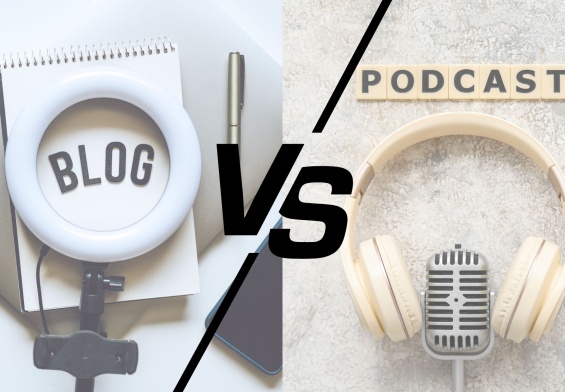In 2025, the U.S. podcast industry alone is projected to generate approximately $2.4 billion in ad revenue, up nearly 10% from the previous year. The global podcast market is also growing robustly, with total value expected to increase from around $20.67 billion in 2024 to $23.07 billion in 2025. These figures underline that podcasting is no longer just a passion project—it’s a legitimate and growing business. Whether you’re a newbie with a few episodes or a seasoned host with a loyal audience, monetizing your podcast can help cover costs, fund growth, and even become a full-time gig. The good news? You don’t need millions of downloads to start earning. With more founders, marketers, and SaaS brands turning to audio to share insights and drive engagement, ecommerce podcasts covering real-world strategies are emerging as one of the most monetizable formats for business creators. This guide explores six proven podcast monetization strategies to help you make money podcasting, with practical tips and real-world examples to get you started.
Understanding Podcast Monetization
What is Podcast Monetization?
Podcast monetization means generating revenue from your show through methods like sponsorships, listener support, or selling products. It’s not just about profit—it’s about sustaining your podcast by covering hosting fees, equipment upgrades, or editing services. Monetization turns your passion into a sustainable venture.
Key Factors for Success
To monetize effectively, you need a loyal audience and consistent content. Understanding your niche (e.g., true crime, personal finance) and listener demographics (age, interests, location) helps you attract the right opportunities. For example, a fitness podcast might appeal to gym brands, while a tech show could attract software companies.
When to Start Monetizing
You don’t need thousands of downloads to begin. Many podcasters start monetizing with as few as 100 listeners by leveraging niche appeal. The key is to focus on engagement over raw numbers—active, dedicated listeners are more valuable than passive ones.
1. Sponsorships and Advertisements
What Are Sponsorships?
Sponsorships involve brands paying to advertise on your podcast. Ads can be pre-roll (before the episode), mid-roll (during), or post-roll (at the end). Host-read ads, where you personally endorse the product, often perform best due to their authenticity. Dynamic ads, inserted programmatically, are another option for larger shows.
How to Attract Sponsors
- Create a Media Kit: Include listener stats (downloads, demographics), your niche, and engagement metrics (e.g., social media interactions).
- Reach Out to Brands: Target companies aligned with your audience. For example, a local coffee shop might sponsor a community-focused podcast.
- Use Platforms: Sign up for marketplaces like Podcorn, AdvertiseCast, or Midroll to connect with sponsors.
Tips for Success
- Be authentic in your ad reads to maintain listener trust. Share personal stories about using the product.
- Negotiate rates based on CPM (cost per thousand downloads), typically $18–$50 for mid-roll ads.
- Start with local businesses if you’re a smaller podcast—they’re often more open to niche partnerships.
Niche business shows—especially ecommerce podcasts with actionable content—often attract sponsors quickly, even with smaller audiences, due to their alignment with high-value B2B listeners.
Example
The podcast The Local Scoop, a small show about neighborhood events, landed a $200/month sponsorship from a nearby bakery by pitching their engaged, hyper-local audience of 500 listeners.
2. Listener Donations and Crowdfunding
What is Crowdfunding for Podcasts?
Crowdfunding platforms like Patreon, Buy Me a Coffee, or Ko-fi let listeners support your show with one-time or recurring donations. In return, you can offer exclusive content like bonus episodes, Q&As, or behind-the-scenes updates.
How to Set Up Crowdfunding
- Choose a Platform: Patreon is great for recurring support, while Buy Me a Coffee suits one-time donations.
- Create Tiered Rewards: Offer perks like $5 for early episode access, $10 for a shoutout, or $25 for exclusive merch.
- Promote Your Campaign: Mention your crowdfunding page in episodes, show notes, and social media posts on platforms like X.
Tips for Success
- Explain how donations help (e.g., “Your support funds new microphones!”).
- Offer rewards that add value without overwhelming your schedule.
- Engage supporters with regular updates to keep them invested.
Example
Chapo Trap House, a political podcast, generates significant revenue through Patreon by offering bonus episodes and exclusive Discord access to thousands of supporters.
3. Affiliate Marketing
What is Affiliate Marketing?
Affiliate marketing involves earning commissions by promoting products or services with unique affiliate links. Each time a listener makes a purchase through your link, you earn a percentage.
How to Implement Affiliate Marketing
- Join Affiliate Programs: Sign up for Amazon Associates, ShareASale, or niche-specific programs (e.g., Bluehost for tech podcasts).
- Promote Products: Share affiliate links in show notes, social media, or during episodes. For example, recommend podcasting gear like the Rode PodMic.
- Disclose Partnerships: Follow FTC guidelines by clearly stating when links are affiliate-based.
Tips for Success
- Promote products you genuinely use or believe in to maintain credibility.
- Track link performance to see what resonates with your audience.
- Experiment with different products to diversify income.
Example
The Podcasting Gear Show earns consistent revenue by promoting microphones and editing software through Amazon Associates, with links shared in their show notes.
4. Premium Content and Subscriptions
What is Premium Content?
Premium content includes exclusive episodes, ad-free listening, or special series available through subscription platforms like Apple Podcasts Subscriptions, Spotify, or Supercast. It’s a great way to reward loyal fans.
How to Create Premium Content
- Develop Exclusive Content: Create bonus episodes, in-depth tutorials, or Q&A sessions.
- Set Pricing: Offer affordable tiers (e.g., $3–$10/month) to attract subscribers.
- Promote Subscriptions: Highlight premium content in episodes and on social media.
Tips for Success
- Ensure premium content adds significant value, like exclusive interviews or expert advice.
- Test different pricing models to find what works for your audience.
- Use analytics to track subscriber retention and adjust offerings.
Example
The Daily by The New York Times offers ad-free episodes and exclusive content through its subscription model, appealing to its dedicated listener base.
5. Selling Your Own Products or Services
What Can You Sell?
You can create podcast-branded merchandise (e.g., t-shirts, mugs) or digital products (e.g., eBooks, courses). Alternatively, offer services like coaching or consulting based on your podcast’s niche.
How to Get Started
- Create Products: Use platforms like Teespring or Printful for merch; Gumroad or Teachable for digital products.
- Promote Offerings: Mention products/services in episodes, show notes, and X posts.
- Leverage Your Expertise: If you host a career podcast, offer resume coaching; if it’s about cooking, sell a recipe eBook.
Tips for Success
- Design products that reflect your podcast’s brand or niche.
- Offer limited-time discounts to drive initial sales.
- Use listener feedback to create products they’ll love.
Example
My Favorite Murder sells branded t-shirts, hoodies, and tote bags, capitalizing on their cult-like fanbase and iconic catchphrases.
6. Live Events and Speaking Engagements
What Are Live Events?
Live events include in-person or virtual podcast recordings, meet-and-greets, or workshops. You can also book paid speaking gigs based on your podcast’s expertise.
How to Organize Live Events
- Plan Events: Partner with local venues for in-person events or use Eventbrite for virtual ticketing.
- Promote Events: Share details via episodes, newsletters, and X posts with hashtags like #PodcastEvent.
- Secure Speaking Gigs: Pitch yourself to conferences or events related to your niche.
Tips for Success
- Start small with virtual events if budget or audience size is limited.
- Engage your community to boost attendance and create buzz.
- Record live events for bonus content to repurpose later.
Example
How I Built This hosts live recordings with high-profile entrepreneurs, selling tickets to fans eager for an in-person experience.
Common Mistakes to Avoid
- Overloading Episodes with Ads: Too many ads can annoy listeners and hurt retention. Limit to 1–2 per episode.
- Ignoring Audience Feedback: Survey listeners to ensure monetization aligns with their preferences.
- Underpricing Your Value: Research market rates for sponsorships or services to avoid undervaluing your work.
- Neglecting Consistency: Irregular episodes can reduce listener trust and monetization opportunities.
Tools and Resources for Monetization
- Sponsorships: Podcorn, AdvertiseCast, Midroll.
- Crowdfunding: Patreon, Ko-fi, Buy Me a Coffee.
- Affiliate Networks: Amazon Associates, ShareASale, CJ Affiliate.
- Subscriptions: Apple Podcasts Subscriptions, Supercast, Spotify.
- Merch & Products: Teespring, Printful, Gumroad.
- Analytics: Chartable, Podtrac for tracking listener metrics.
Conclusion
Monetizing your podcast is within reach, whether you’re just starting out or running an established show. From sponsorships and affiliate marketing to crowdfunding and live events, these six strategies offer diverse ways to turn your passion into revenue. Start small, stay authentic, and focus on delivering value to your listeners.




